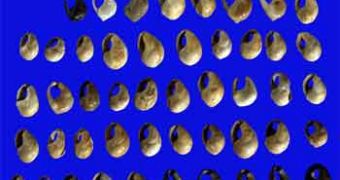Christopher Henshilwood from the Institute for Human Evolution at the University of the Witwatersrand, Johannesburg along with his team discovered that people had a great interested for art even 100,000 years ago. They have reached this conclusion after studying two new found abalone shells in Blombos Cave, located in South Africa.
It seemed that prehistoric artists used different items as tools, in order to create their one-of-a kind masterpieces. Among others objects, the scientists have discovered charcoal, grindstones, bone fragments and shaped stones. Henshilwood said it is likely that cavemen used red pigment in the process of making decorative objects, to paint or just as a way to protect their skin.
The archeological findings were dug up from the sand where they were buried in Blombos Cave in 2008. Talking about the pigment they have discovered in the cave, the team says it is possible that ancient men used fragments of ochre in order to produce the red powder which was needed for their works of art.
The fact that early artists were able to use a special recipe in order to obtain a product says a lot about their general abilities, behavior and lifestyle.
"The analysis of the residues in the shell, on the tools and the pieces of ochre has allowed us to reconstruct the function of the tools involved and evaluate the degree of behavioral complexity implicit in the process. We were also able to reconstruct the recipe to produce the pigment," affirmed Francesco D'Errico, director of research at the French National Centre for Scientific Research (CNRS)
This finding is very important due to the fact that it is the first time when scientist are actually able to understand and recompose the entire creative process. Even though they have discovered other artefacts, ancient tools or works of art, so far they haven't been able to follow all the steps and put all the pieces of the puzzle together.
"Bits and pieces attesting to various phases of the process have been found independently and separately in various sites in and out of Africa at comparable ages, but to the best of my knowledge this is the first time that the whole process can be reconstructed," declared Hovers
Scientist are aware of the fact that Blombos Cave has been hiding evidence which reflects Middle Stone Age inhabitants' passion for art. Pieces of bones and other fragments of tools have started being collected from this particular location 20 years ago.
Ten years ago, scientists found a 70, 000 year old abstract drawing painted on a block of ochre, which suggested the fact that ancient men were able, even at that time, to correlate creative thinking with their drawing skills.
The new discovery implies the fact that Middle Stone Age were capable of engaging efforts in far more complex projects than scientists first thought. Their actions suggest the existence of long-term strategies, which led to the creation of the outstanding 100,000-year-old art gallery, placed in the heart of South Africa.

 14 DAY TRIAL //
14 DAY TRIAL //